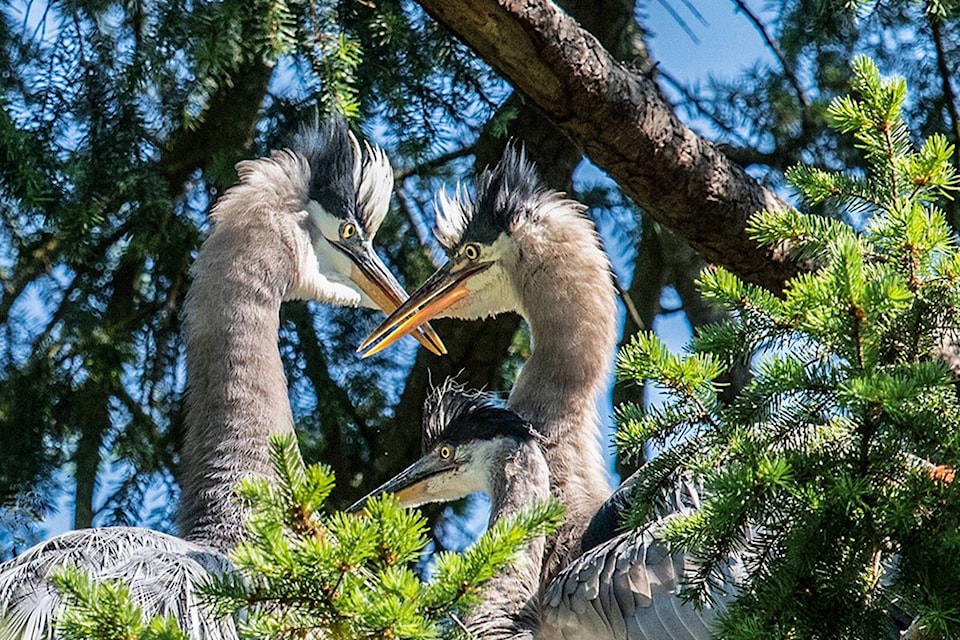Campbell River city council wants to know what’s being done in our community to help the great blue heron after a presentation Monday night encouraged the protection of the bird’s habitat.
Although the group’s most pressing concern is the current development happening in the Twillingagte Road area, where they say at least one pair of the birds historically nest, Gillian Anderson, chair of the BC Great Blue Heron Society, presented her concerns to council, saying if action isn’t taken immediately on a city-wide scale, this beautiful bird that many consider an integral part of the natural fabric of our area, could be gone.
“Like almost all birds, herons are under stress from the increasing human encroachment into their territory, as well as the effects of climate change,” Anderson says. “Raising chicks is a precarious process, with usually less than two chicks per successful nest, and those chicks who do survive face a treacherous first year.”
Anderson says that the mortality rate of the great blue heron is 75 per cent through the first year, meaning only one-quarter of the birds make it to adulthood.
Life is made even more difficult for the already-struggling population, Anderson says, “when the places in which they have nested and rested and found food for generations disappear. Imagine if you came home from a two-week vacation and found your home burned to the ground, the local grocery stores all closed and hostile crowds chased you from the neighbourhood with chainsaws. The herons are facing these kinds of constant threats.”
RELATED: Group urges city to protect heron rookery
Although herons are considered “species of special concern,” Anderson says, the federal and provincial governments have passed much of the role of their protection to municipal governments, as bylaw creation that would protect nesting trees and development approvals or denials are decided at the local level.
What’s needed, Anderson says, is the preservation of large trees – especially those close to the ocean – and buffer zones of trees between where construction is occurring and where the herons nest so that the birds don’t abandon their nesting areas because of the noise from nearby development.
“The challenge of safeguarding habitat in a growing city demands innovative and shrewd planning and high standards for development, along with a far-reaching vision for a wildlife friendly city.”
Anderson again points out that it’s not just the birds who benefit from the protection of the trees, however, echoing similar thoughts to what was presented in the 2019 budget consultation process by Greenways Land Trust President Sandra Milligan, who said “it’s important to realize that for every dollar the city spends on trees, it gets back more than that dollar. To do what those trees do, were they to get taken down, you would have to be putting in way more infrastructure for stormwater and dealing with air quality problems and everything else, but trees provide that asset.”
RELATED: Campbell River’s urban trees to finally receive protection
“Your actions and policies will decide whether herons will continue to have a home in Campbell River and what the city will look like in 20 or 100 years. Houses and strip malls can always be built, but once a forest or wetland is lost, it’s gone forever.”
After the presentation, council directed staff to prepare a report on how conservation measures are currently being taken and make recommendations on how to move forward in protecting the heron’s habitat.
